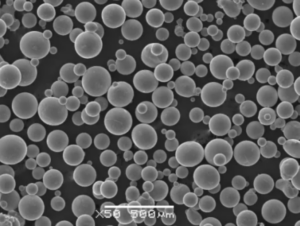Vue d'ensemble Poudre de haute pureté
Dans le monde de la science des matériaux, les poudres de haute pureté sont les éléments constitutifs de la fabrication et de la technologie de pointe. Ces particules finement broyées - souvent des métaux ou des alliages métalliques - sont appréciées pour leur pureté exceptionnelle, leur taille constante et leur composition chimique précise. Mais qu'est-ce qu'une poudre de haute pureté ? Pourquoi est-elle si importante ? Et quels sont les différents types de poudre que l'on peut trouver ?
Si vous vous lancez dans le domaine des poudres de haute pureté, il est essentiel de comprendre les tenants et les aboutissants de ce matériau spécialisé. Dans ce guide, nous allons tout explorer, de la composition et des propriétés de ces poudres à leurs applications, en passant par les fournisseurs et la manière de choisir la meilleure pour vos besoins.
Qu'est-ce que la poudre de haute pureté ?
Les poudres de haute pureté sont des substances finement divisées, généralement des métaux ou des alliages, qui affichent un niveau de pureté de 99,9 % ou plus. Ces poudres sont essentielles dans les industries où la moindre impureté peut entraîner des problèmes de performance ou des défaillances importantes, comme dans l'électronique, l'aérospatiale et les produits pharmaceutiques.
Imaginez que vous essayez de faire un gâteau avec de la farine contenant de minuscules morceaux de sable. Le résultat ne serait pas à la hauteur des espérances, n'est-ce pas ? La même logique s'applique aux processus de fabrication qui utilisent des poudres métalliques : la pureté est primordiale.
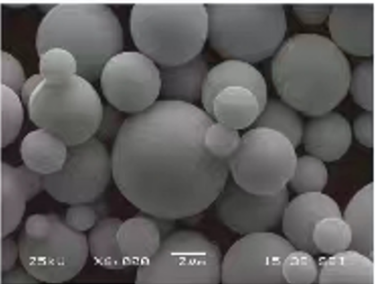
Composition de la poudre de haute pureté
Les poudres de haute pureté se présentent sous différentes compositions en fonction du métal ou de l'alliage en question. Chaque type possède ses propres caractéristiques, ce qui le rend adapté à des applications spécifiques. Vous trouverez ci-dessous un tableau détaillant certaines des poudres métalliques de haute pureté les plus courantes, leur composition et leurs principales caractéristiques.
| Poudre métallique | Composition | Niveau de pureté | Caractéristiques principales |
|---|---|---|---|
| Poudre d'aluminium | Al (99,9 % ou plus) | 99.9% | Léger, haute conductivité, résistant à la corrosion |
| Poudre de cuivre | Cu (99,99 % ou plus) | 99.99% | Excellente conductivité électrique, ductilité |
| Poudre de titane | Ti (99,5 % ou plus) | 99.5% | Rapport résistance/poids élevé, résistant à la corrosion |
| Poudre d'argent | Ag (99,99 % ou plus) | 99.99% | Conductivité thermique et électrique élevée |
| Poudre d'or | Au (99,99 % ou plus) | 99.99% | Résistance élevée à la corrosion, excellente conductivité |
| poudre de fer | Fe (99,9 % ou plus) | 99.9% | Magnétique, facilement allié à d'autres métaux |
| poudre de nickel | Ni (99,8 % ou plus) | 99.8% | Haute résistance à l'oxydation et à la corrosion |
| Poudre de zinc | Zn (99,9 % ou plus) | 99.9% | Résistant à la corrosion, utilisé dans la galvanisation |
| Poudre de platine | Pt (99,95 % ou plus) | 99.95% | Extrêmement résistant à la corrosion, propriétés catalytiques |
| Poudre de palladium | Pd (99,95 % ou plus) | 99.95% | Excellentes propriétés catalytiques, résistance à la corrosion |
Caractéristiques des Poudre de haute pureté
Les caractéristiques des poudres de haute pureté sont ce qui les rend si précieuses dans diverses industries. Voici quelques-unes des propriétés les plus importantes :
- La pureté: Des niveaux de pureté élevés (99,9 % et plus) garantissent la présence d'un minimum d'impuretés susceptibles d'affecter les performances du matériau.
- Taille et distribution des particules: Une taille et une distribution homogènes des particules sont essentielles pour assurer l'uniformité du produit final.
- Stabilité chimique: Ces poudres sont chimiquement stables, ce qui signifie qu'elles ne réagissent pas facilement avec d'autres substances, ce qui est essentiel dans les environnements où la réactivité peut entraîner des problèmes de sécurité ou des défaillances de produits.
- Capacité d'écoulement: La capacité de la poudre à s'écouler en douceur est essentielle dans les processus de fabrication tels que l'impression 3D ou la métallurgie des poudres.
- Densité: La densité de la poudre peut affecter les propriétés du produit final, telles que la résistance et la durabilité.
Types de poudres métalliques de haute pureté
Nous allons nous pencher plus en détail sur certaines poudres métalliques de haute pureté, en examinant leurs propriétés uniques, leurs applications et les raisons pour lesquelles elles se distinguent des autres.
1. Poudre d'aluminium
- Propriétés: La poudre d'aluminium est connue pour sa légèreté et sa grande conductivité électrique. Elle est également résistante à la corrosion, ce qui la rend idéale pour les applications dans les industries aérospatiale et automobile.
- Applications: Largement utilisé dans la production de peintures, d'explosifs et comme composant des revêtements métalliques.
2. Poudre de cuivre
- Propriétés: Grâce à son excellente conductivité électrique et à sa ductilité, la poudre de cuivre est un matériau essentiel dans le domaine de l'électronique.
- Applications: Utilisé dans la production de composants électriques, d'encres conductrices et de revêtements.
3. Poudre de titane
- Propriétés: La poudre de titane offre un rapport poids/résistance élevé et résiste à la corrosion, ce qui la rend idéale pour les implants médicaux et les composants aérospatiaux.
- Applications: Couramment utilisé dans les domaines de l'impression 3D, de l'aérospatiale et de la biomédecine.
4. Poudre d'argent
- Propriétés: La poudre d'argent est hautement conductrice et possède des propriétés antimicrobiennes, ce qui la rend précieuse dans les applications électroniques et médicales.
- Applications: Utilisé dans les pâtes conductrices, les cellules solaires et les revêtements antimicrobiens.
5. Poudre d'or
- Propriétés: La poudre d'or est extrêmement résistante à la corrosion et possède une excellente conductivité électrique, ce qui la rend idéale pour les appareils électroniques et médicaux haut de gamme.
- Applications: Utilisé en électronique, en bijouterie et comme catalyseur dans les réactions chimiques.
6. Poudre de fer
- Propriétés: La poudre de fer est magnétique et facilement allié, ce qui permet une large gamme d'applications dans la fabrication et la métallurgie.
- Applications: Utilisé dans les pièces automobiles, les matériaux magnétiques et comme catalyseur dans les réactions chimiques.
7. Poudre de nickel
- Propriétés: La poudre de nickel est très résistante à l'oxydation et à la corrosion, ce qui la rend adaptée aux environnements difficiles.
- Applications: Utilisé dans les batteries, les superalliages et comme catalyseur dans les processus d'hydrogénation.
8. Poudre de zinc
- Propriétés: La poudre de zinc est principalement connue pour sa résistance à la corrosion et est souvent utilisée dans les revêtements de protection.
- Applications: Largement utilisé dans la galvanisation, comme agent anticorrosion, et dans la production de batteries.
9. Poudre de platine
- Propriétés: La poudre de platine est incroyablement résistante à la corrosion et possède d'excellentes propriétés catalytiques, ce qui la rend précieuse dans les domaines industriel et médical.
- Applications: Utilisé dans les convertisseurs catalytiques, les piles à combustible et comme catalyseur dans diverses réactions chimiques.
10. Poudre de palladium
- Propriétés: La poudre de palladium est connue pour ses propriétés catalytiques et sa résistance au ternissement, ce qui la rend idéale pour une variété de processus chimiques.
- Applications: Couramment utilisé dans l'électronique, les convertisseurs catalytiques et la purification de l'hydrogène.
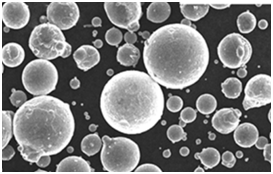


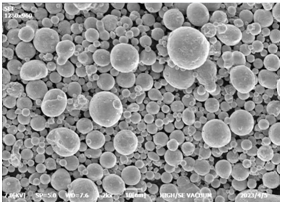
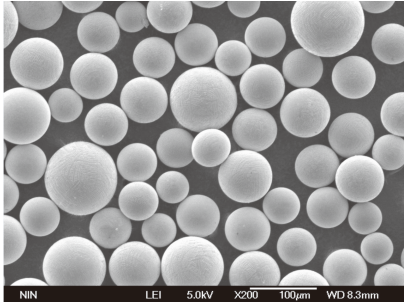
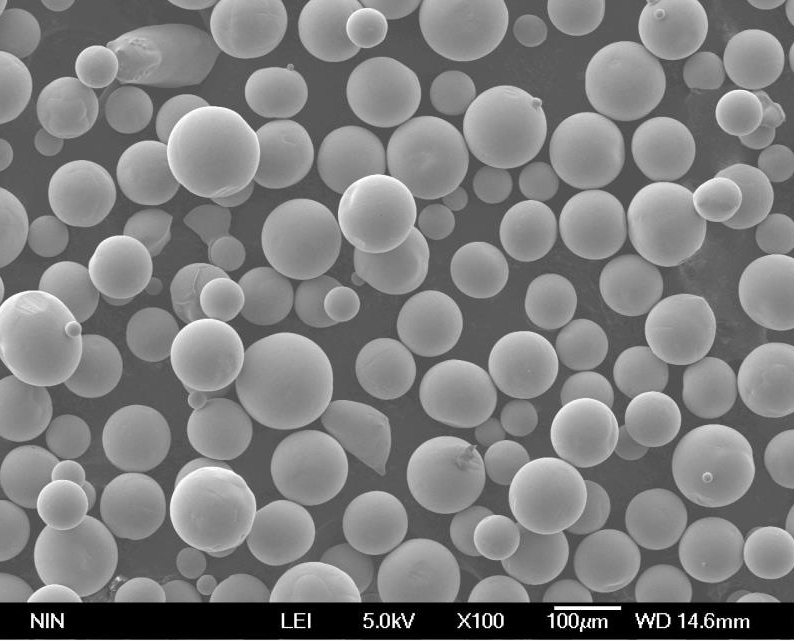
Applications de la poudre de haute pureté
Les poudres de haute pureté sont utilisées dans une variété d'industries, chacune exigeant des propriétés différentes en fonction de l'application. Voici un aperçu de l'utilisation de ces poudres dans différents domaines :
| L'industrie | Applications courantes | Exemples de poudres utilisées |
|---|---|---|
| Électronique | Encres conductrices, cartes de circuits imprimés (PCB), semi-conducteurs | Cuivre, argent, or, palladium |
| Aérospatiale | Composants légers, revêtements, pièces imprimées en 3D | Aluminium, Titane, Nickel |
| Automobile | Composants de moteurs, convertisseurs catalytiques, électrodes de batteries | Platine, palladium, zinc, fer |
| Médical | Implants, prothèses, revêtements antimicrobiens | Titane, argent, or, platine |
| L'énergie | Piles à combustible, panneaux solaires, batteries | Platine, nickel, cuivre, argent |
| Chimique | Catalyseurs, procédés d'hydrogénation | Palladium, Platine, Nickel |
| Bijoux | Bijoux haut de gamme, revêtements résistants à la corrosion | Or, argent, platine |
Spécifications, tailles, qualités et normes
Comprendre les spécifications, les tailles et les qualités des poudres de haute pureté est essentielle pour sélectionner le matériau adapté à vos besoins. Le tableau ci-dessous présente les principales spécifications de chaque poudre métallique.
| Poudre métallique | Gamme de taille des particules (µm) | Grade de pureté | Normes |
|---|---|---|---|
| Poudre d'aluminium | 1 – 100 | 99.9% (haute pureté) | ASTM B928/B928M-15 |
| Poudre de cuivre | 0.5 – 75 | 99.99% (ultra haute pureté) | ASTM B170 |
| Poudre de titane | 5 – 45 | 99.5% (haute pureté) | ASTM F67, ASTM F136 |
| Poudre d'argent | 1 – 50 | 99.99% (ultra haute pureté) | ASTM B832 |
| Poudre d'or | 1 – 10 | 99.99% (ultra haute pureté) | ASTM B488 |
| poudre de fer | 10 – 150 | 99.9% (haute pureté) | ASTM A575, ASTM A876 |
| poudre de nickel | 5 – 20 | 99.8 % (haute pureté) | ASTM B330 |
| Poudre de zinc | 1 – 50 | 99.9% (haute pureté) | ASTM B822 |
| Poudre de platine | 1 – 25 | 99.95 % (ultra haute pureté) | ASTM B562 |
| Poudre de palladium | 0.5 – 5 | 99.95 % (ultra haute pureté) | ASTM B563 |
Fournisseurs et prix des poudres de haute pureté
Lorsqu'il s'agit de s'approvisionner en poudres de haute pureté, plusieurs fournisseurs réputés proposent une gamme de produits. Les prix peuvent varier considérablement en fonction de la pureté, de la taille des particules et de la quantité achetée.
| Fournisseur | Poudres disponibles | Fourchette de prix (par kg) | Localisation |
|---|---|---|---|
| Éléments américains | Aluminium, cuivre, titane, nickel | $150 – $800 | ÉTATS-UNIS |
| Advanced Materials Inc | Argent, or, platine, palladium | $500 – $2,000 | ÉTATS-UNIS |
| Goodfellow | Zinc, fer, cuivre, nickel | $100 – $600 | ROYAUME-UNI |
| Alfa Aesar | Titane, aluminium, or, argent | $200 – $1,500 | ÉTATS-UNIS |
| Poudres métalliques USA | Cuivre, zinc, nickel, palladium | $250 – $1,200 | ÉTATS-UNIS |
Comparaison des poudres de haute pureté : Avantages et limites
Pour choisir la bonne poudre de haute pureté, il faut souvent comparer les avantages et les limites de chaque option. Voici un tableau qui décompose ces facteurs pour chaque poudre métallique examinée.
| Poudre métallique | Avantages | Limites |
|---|---|---|
| Poudre d'aluminium | Léger, résistant à la corrosion, conducteur | S'oxyde facilement, point de fusion plus bas |
| Poudre de cuivre | Excellente conductivité, ductile | Sujet à l'oxydation, relativement cher |
| Poudre de titane | Rapport résistance/poids élevé, biocompatible | Coûteux, difficile à traiter |
| Poudre d'argent | Conductivité supérieure, propriétés antimicrobiennes | Cher, se ternit avec le temps |
| Poudre d'or | Excellente conductivité, résistant à la corrosion | Très cher, lourd |
| poudre de fer | Magnétique, facilement allié | Sujet à la rouille, lourd |
| poudre de nickel | Résistant à la corrosion, point de fusion élevé | Réactions allergiques dans certaines applications |
| Poudre de zinc | Résistant à la corrosion, abordable | Point de fusion bas, peu résistant |
| Poudre de platine | Extrêmement résistant à la corrosion, excellentes propriétés catalytiques | Extrêmement coûteux, lourd |
| Poudre de palladium | Efficacité catalytique élevée, résistance au ternissement | Très cher, disponibilité limitée |

FAQ
Voici quelques questions courantes sur les poudres de haute pureté, accompagnées de réponses détaillées.
| Question | Réponse |
|---|---|
| Qu'est-ce qu'une poudre de haute pureté ? | Les poudres de haute pureté ont un niveau de pureté de 99,9 % ou plus, garantissant un minimum d'impuretés. |
| Pourquoi la pureté est-elle importante pour les poudres métalliques ? | La pureté est cruciale car les impuretés peuvent affecter les performances, la conductivité et la sécurité du produit final. |
| Quelles sont les industries qui utilisent des poudres de haute pureté ? | Les poudres de haute pureté sont utilisées dans les secteurs de l'électronique, de l'aérospatiale, de l'automobile, de la médecine, de l'énergie et de la chimie. |
| Comment choisir la bonne poudre de haute pureté ? | Il faut tenir compte de l'application spécifique, des propriétés requises et du budget pour choisir la poudre appropriée. |
| Quels sont les défis liés à la manipulation des poudres de haute pureté ? | Leur manipulation peut s'avérer délicate en raison de la taille fine des particules et de leur réactivité potentielle. Il est essentiel d'adopter des pratiques de stockage et de manipulation adéquates. |
| Les poudres de haute pureté sont-elles chères ? | Oui, les poudres de haute pureté ont tendance à être plus chères en raison de la complexité du processus de fabrication et de la nécessité d'utiliser des matériaux de haute qualité. |
| Comment les poudres de haute pureté sont-elles produites ? | Ils sont généralement produits par des procédés tels que l'atomisation, la réduction chimique et l'électrolyse afin de garantir une pureté et une cohérence élevées. |
| Les poudres de haute pureté peuvent-elles être personnalisées ? | Oui, de nombreux fournisseurs proposent des options de personnalisation en termes de taille des particules, de distribution et de niveaux de pureté. |
| Quelles sont les préoccupations environnementales liées aux poudres de haute pureté ? | La production et l'élimination des poudres de haute pureté doivent être gérées avec soin afin d'éviter toute contamination de l'environnement. Le recyclage et l'approvisionnement responsable peuvent atténuer ces problèmes. |
| Existe-t-il des alternatives aux poudres de haute pureté ? | En fonction de l'application, des poudres de moindre pureté ou des matériaux différents peuvent être utilisés, mais ils peuvent ne pas offrir le même niveau de performance. |
Conclusion
Poudres de haute pureté sont les héros méconnus de la fabrication et de la technologie de pointe. Grâce à leur pureté exceptionnelle et à leurs propriétés uniques, ces poudres jouent un rôle essentiel dans des secteurs allant de l'aérospatiale à l'électronique. Que vous cherchiez à améliorer les performances d'un produit ou à développer des technologies de pointe, il est essentiel de comprendre les nuances des poudres de haute pureté. En choisissant la bonne poudre pour votre application, vous pouvez garantir des performances, une fiabilité et une efficacité optimales dans vos projets.

